In the past, protecting bat habitat has meant protecting caves. That’s a vital element, but it’s only one piece of the bat habitat puzzle. With bats increasingly at risk from threats like wind energy projects and housing developments, it’s essential to protect the places where they feed at night.
The problem is, it can be really difficult to determine a bat’s nightly habitat use.
“Bats are tricky to research in general,” says Cory Holliday, cave and karst program director for The Nature Conservancy in Tennessee. “They’re small. They fly at night. We know about their roosting sites, but as soon as they leave the cave, it’s anybody’s guess. With the potential for new wind energy projects and other development, there’s a tremendous need to know what they’re doing on the landscape.”
That’s why The Nature Conservancy, the Tennessee Wildlife Resources Agency and Copperhead Consulting spent the summer using transmitters to track the nightly movements of gray bats, one of the first such studies conducted on this species.
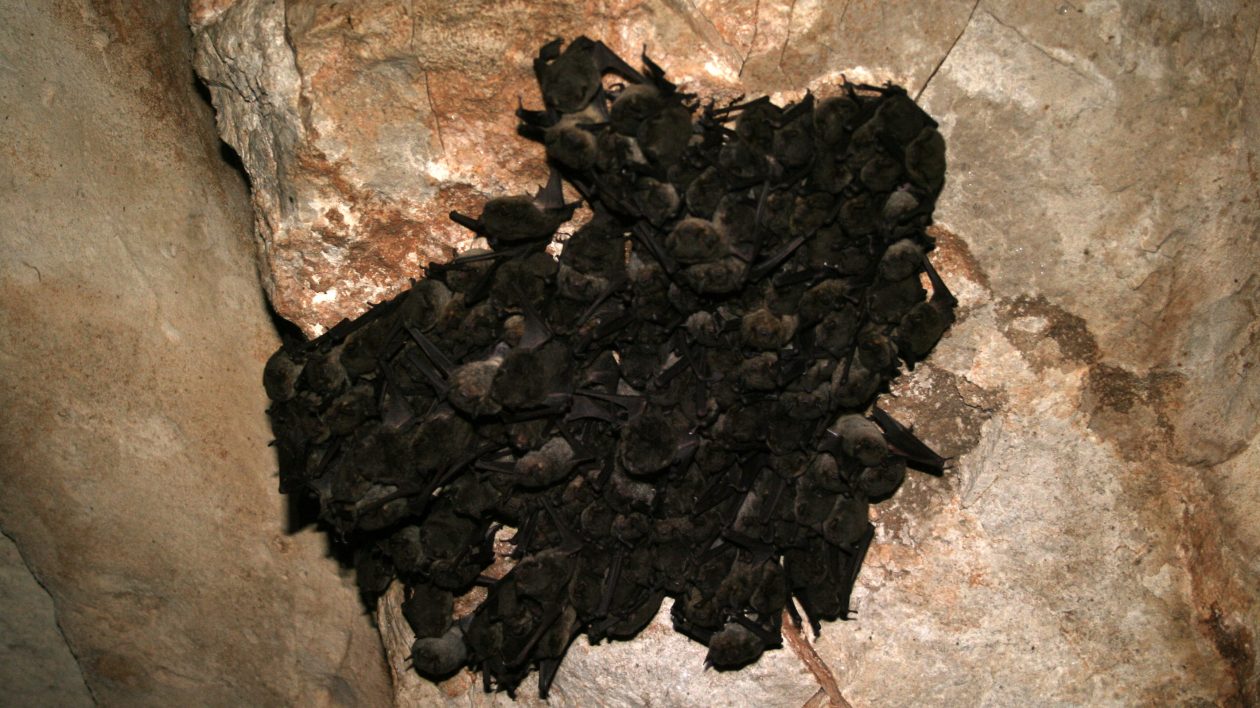
The Conservancy and partners have been tracking Indiana bats, an endangered species, for ten years. “We closely protected their roosting sites, but the bats continued to decline,” says Holliday. “So we knew something else had to be happening on the landscape.”
In the case of Indiana bats, the species roosts in summer in large, dead mature trees. “Current forest management just doesn’t let trees get that old,” says Holliday.
Gray bats are also endangered but have a healthier population than Indiana bats. A growing interest in wind development could be a threat. The researchers used the techniques they developed for Indiana bats to track the nightly movements of gray bats.
Gray bats are found in the southeastern United States, where they roost in large concentrations in caves. Unlike some bats, the gray bats do not frequent abandoned mine sites or other human-made structures. Ninety-five percent of the population roosts in only nine caves. This makes the population vulnerable, but it also allows conservationists to closely protect these sites. Protecting other parts of the gray bat’s habitat is the focus of the bat tracking project.
Research began after female bats had weaned their young. Researchers set harp traps at the front of caves. These traps are designed so the bats fall softly into the trap, rather than get tangled in mesh.
“We then give the bat a little haircut, apply surgical glue and attach the transmitter,” says Holliday. The transmitter weighs 0.3 grams (a bat weighs 11 grams) and falls off after 21 days.
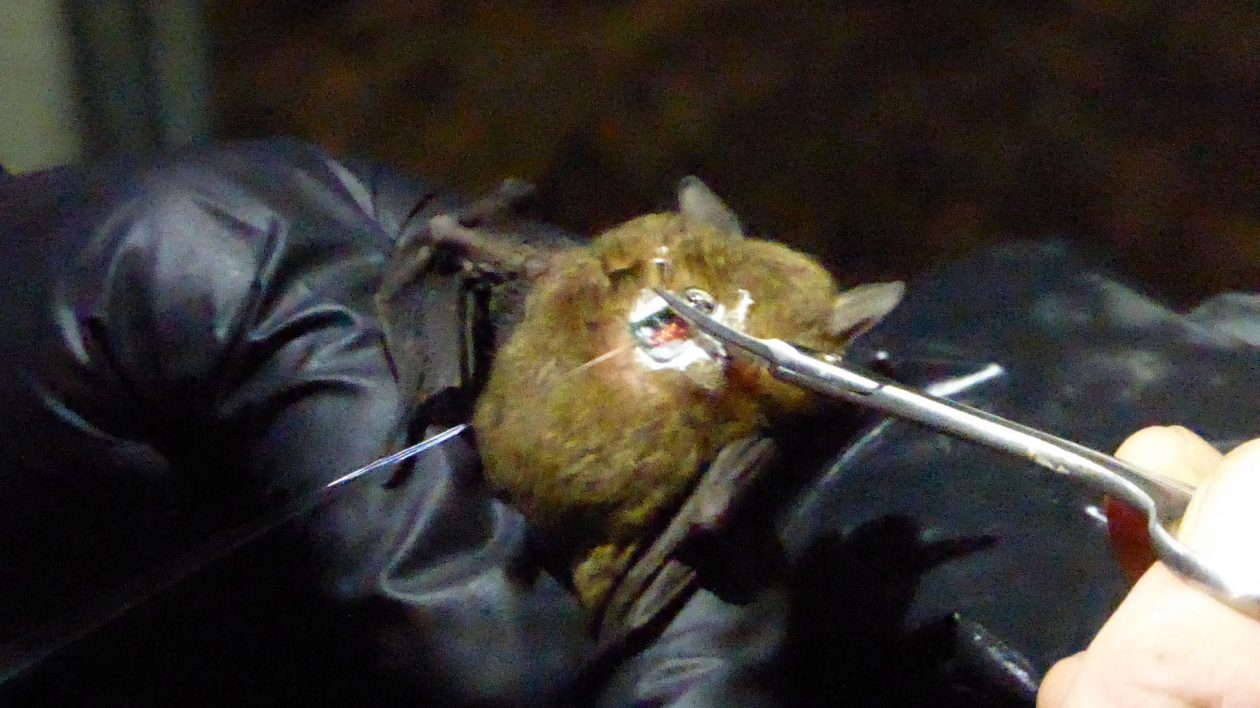
Researchers then follow the tagged bat – all night long. Both ground and air crews follow the critter. “Ground crews could keep up with Indiana bats, but it was a lot harder with gray bats. Gray bats are really moving,” says Holliday. “Thirty-five miles per hour may not sound fast, but they can cross a lake or go over a mountain, making it really difficult for a car to follow.”
The plane is operated by Copperhead Consulting, a biological firm that specializes in bat research. A two-seat plane flies overhead with antennae on both wings so that the bat can be detected on either side of the cockpit. Once the crew gets a reading, they report it to the ground crew. Locations are mapped throughout the night.
“These bats come out at dusk and typically are out feeding on insects until 4:30 a.m.,” says Holliday. “Then they fly as fast as they can back to the cave.”
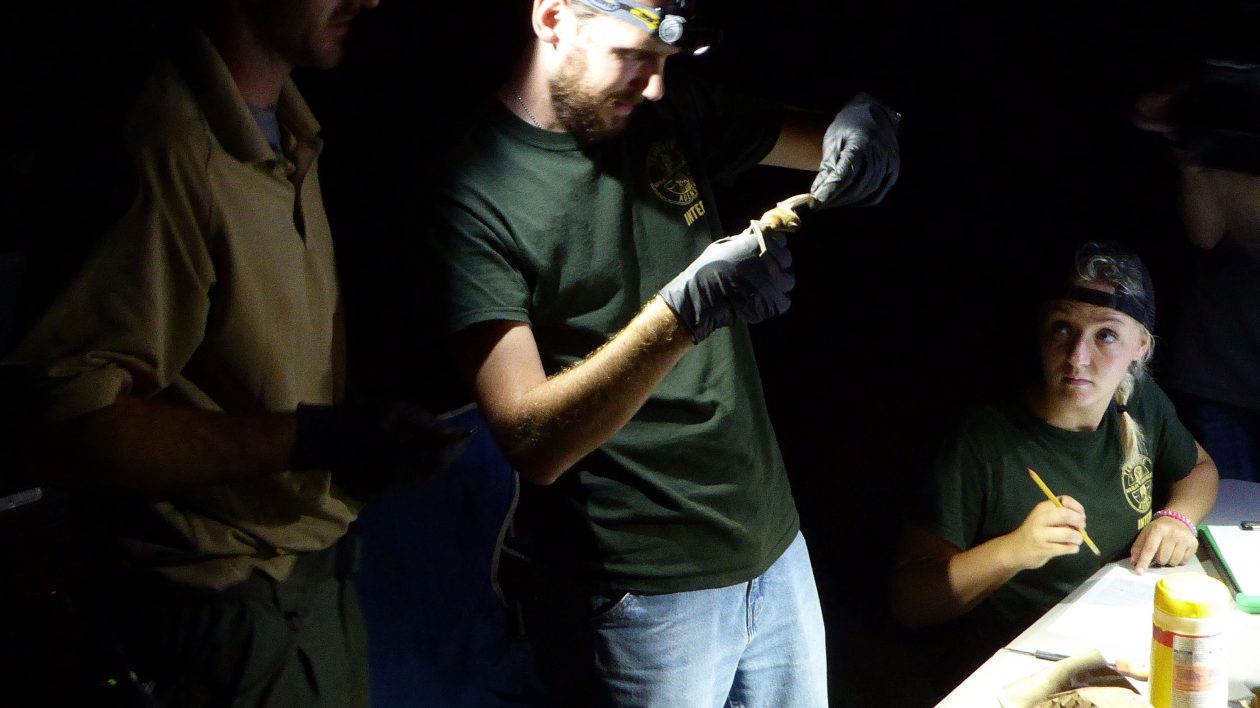
The research has already revealed some surprises. Gray bats purportedly feed almost exclusively over large bodies of water like lakes and rivers. But the tracked bats fed over large bodies of water only about half of the time, with the remainder of their feeding over small ponds and agricultural fields.
The next part of the project will involve mapping the entire migration of gray bats, from summer range to winter hibernation sites. Gray bats can migrate 300 miles or more from summer roosts to winter hibernation caves.
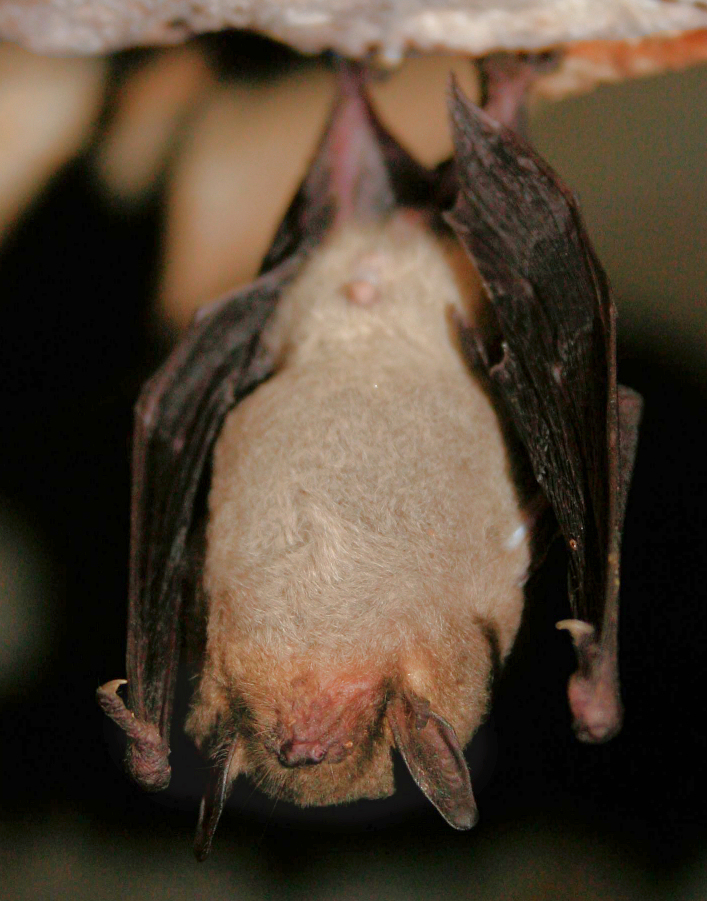
“We wanted to see how this tracking went with gray bats, to assess if we could work with the species,” says Holliday. “We want to attempt a migratory study, which would be the first of its kind.”
Right now, there is only one major wind development in the gray bats’ range. But other projects are proposed. The goal, according to Holliday, is to make sure those projects are sited in areas that will have the least impacts on bats.
“Bats have faced a lot of threats over the decades, from the destruction of caves to white-nose syndrome,” says Holliday. “We want to be proactive here. We want to have the data so we know the habitat that bats need. That way we can make recommendations for where wind energy should and shouldn’t be. Bats are difficult to study, but now we have technology that can help us make better conservation decisions.”
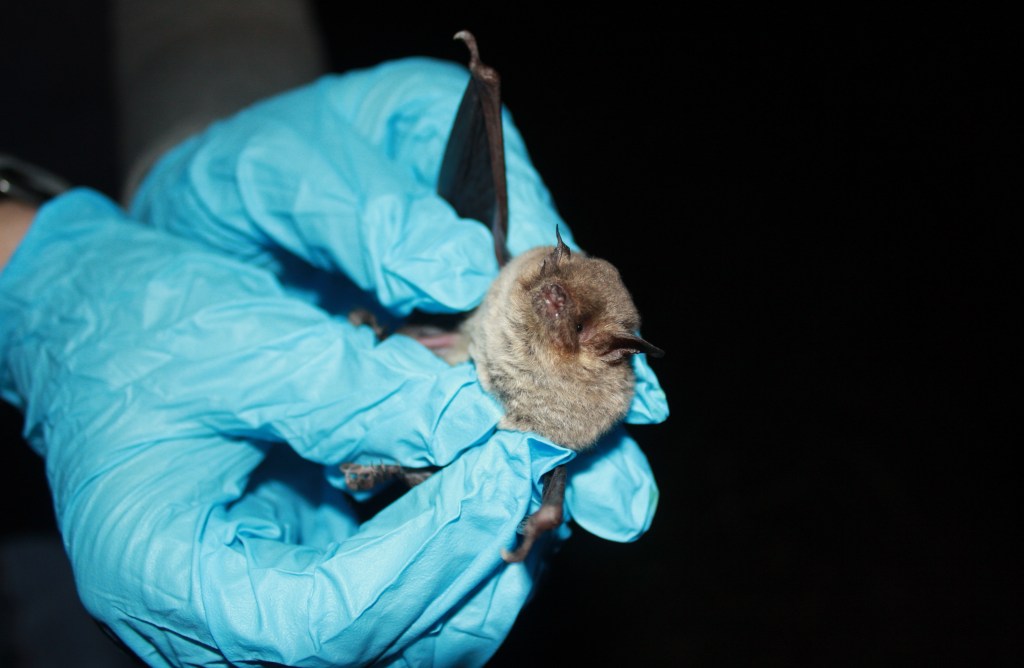



Thank you for the work you’re doing to help bats. They are amazing creatures who provide such great service for us. I am trying to learn all I can about them so I can educate others on how fascinating they are. Thank you again for sharing this information.
Since you found bats feeding over agricultural fields – I would imagine the present use of chemicals & pesticides also causes losses.
Thank you for caring about these bats. They are truly amazing! Vicki Kunkel 🙂
Very interesting information on these very important bats. Keep up the good work and the research to help them thrive and not be lost to all of us to enjoy.
In the summer here in High Point, N.C. we have observed bats at dusk flying around in the yard. We sit outside and watch hummingbirds. I always wondered where they roast. People think all bats carry rabies. If one gets in their house, they panic. I don’t know much at all about bats, but would like to learn.
Hi, Matt,
I would very much like to learn how the white-nose project of constructing an artificial cave near a cave with WNS-infected bats-inturned out.
Did bats use the artificial cave? This was a project of Holliday, I understnd.
Hi Karlene,
The bats did not use the artificial cave. It is being used for experimentation for other white-nose syndrome remedies. There have been promising leads in protecting bats against white-nose syndrome in laboratory settings, but it’s been difficult to find viable solutions for the field. Experimentation (including learning from failures) will be an important part of bat conservation in the years ahead.
I spent a summer tracking Indiana bats and that led to completing my M.S. working to understand roosting habitat of other bat species. Your work with gray bats brought me back to the fun times ground tracking, screeching around corners in rural Indiana, launching out of vehicles to stand on the roof with the huge yagi. What fun! Thank you for all you do for this important species and for sharing your stories.
Another great update on Bats…..Environmentally so important yet so vulnerable. Sounds like the Gray bats don’t fly quite as fast as the free-tails. I have not heard much recently about white-nose syndrome. Is it under “control” and are the various bat roost recovering??
White-nose syndrome is still a major issue. In Pennsylvania, for instance, bat populations have been reduced by 93 percent since white-nose syndrome first appeared. There have been some promising experimental results in the lab, but establishing an effective remedy in the field has remained elusive.